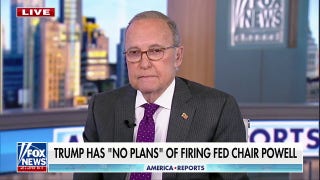Data Clouds December Rate-Hike Possibility
U.S. consumer spending in September recorded its smallest gain in eight months as personal income barely rose, suggesting some cooling in domestic demand after recent hefty increases.
The Commerce Department data and another report from the Labor Department on Friday also showed weak inflationary pressures, which would argue against the Federal Reserve raising interest rates at the end of the year.
U.S. central bank policymakers this week put a rate hike in December on the table with a direct reference to their final meeting of the year. The Fed has kept benchmark overnight interest rates near zero since December 2008.
"It will be difficult for the Fed to justify a rate hike at a time when income, consumption, and inflation are trending lower, leaving a December rate hike less likely than prior to the data," said Jay Morelock, an economist at FTN Financial in New York.
Consumer spending, which accounts for more than two-thirds of U.S. economic activity, edged up 0.1 percent last month after rising 0.4 percent rise in August. September's consumer spending data was included in Thursday's third-quarter gross domestic product report.
Consumer spending rose at a brisk 3.2 percent annual pace in the third quarter, helping to lift GDP growth to a 1.5 percent rate. Consumption has increased at a rate of more than 3 percent in each of the last two quarters.
Third-quarter growth was constrained by business efforts to whittle down an inventory bloat, a strong dollar and ongoing spending cuts by energy companies.
Stocks on Wall Street were trading marginally lower, while prices for longer-dated U.S. government debt rose. The dollar fell against a basket of currencies.
WEAK INFLATION
When adjusted for inflation, consumer spending rose 0.2 percent in September after increasing 0.4 percent in August, suggesting consumption will continue to support the economy through the rest of the year.
That view also was bolstered by a separate report showing the University of Michigan's consumer sentiment index rebounded in October from September. Consumer spending growth, however, is unlikely to maintain the brisk pace witnessed in the second and third quarters in the absence of a significant rise in income.
Income ticked up 0.1 percent as wages and salaries fell last month, especially in manufacturing, after rising 0.4 percent in August.
"Stronger income growth is needed to support stronger consumer spending," said Jennifer Lee, a senior economist at BMO Capital Markets in Toronto.
With spending sluggish, inflation was weak last month. A price index for consumer spending slipped 0.1 percent, the first decline since January, after being flat in August.
In the 12 months through September, the personal consumption expenditures (PCE) price index rose 0.2 percent, the smallest increase since April, after increasing 0.3 percent in August.
Excluding food and energy, prices rose 0.1 percent for a fifth straight month. The so-called core PCE price index rose 1.3 percent in the 12 months through September after a similar gain in August.
Inflation has persistently run below the Fed's 2 percent target. A report from the Labor Department showed the Employment Cost Index, the broadest measure of labor costs, increased 0.6 percent after a 0.2 percent gain in the second quarter.
In the 12 months through September, labor costs held steady at 2.0 percent, below the 3 percent threshold that economists say is needed to bring inflation closer to the Fed's target.
"We are still in a modest compensation-gain environment and that implies inflation is not likely to accelerate sharply soon," said Joel Naroff, chief economist at Naroff Economic Advisers in Holland, Pennsylvania.
"The labor market may be tight but firms appear to be in no great hurry to raise compensation."
(Reporting by Lucia Mutikani; Editing by Paul Simao)



















